How to Distinguish SSAW Pipes from Other Types of Steel Pipes
Steel pipes come in several manufacturing styles — SSAW, LSAW, ERW, and Seamless — each designed for specific industrial needs. However, when you see a pipe with a visible spiral seam running along its body, it’s likely a Spiral Submerged Arc Welded (SSAW) pipe. Understanding how to distinguish SSAW pipes from other types is essential for engineers, buyers, and project managers who want to select the right material for their applications.
1. Understanding What SSAW Pipes Are
An SSAW pipe (Spiral Submerged Arc Welded pipe) is made by forming hot-rolled steel coils into a spiral shape and then welding the edges together using submerged arc welding both inside and outside the seam. This process allows manufacturers to produce large-diameter pipes with adjustable wall thickness — ideal for pipelines, water transport, and piling projects.
2. Visual Characteristics of SSAW Pipes
The most obvious way to recognize an SSAW pipe is by its spiral weld seam that wraps around the pipe body at an angle. This seam pattern is unique to spiral welding and immediately distinguishes it from straight-seam pipes.
Other identifying features include:
- Helical weld line: visible spiral running continuously along the pipe.
- Uniform wall thickness: smooth and consistent surface finish.
- Larger diameter: typically used for pipes exceeding 406mm OD.
3. How SSAW Differs from Other Types
|
Pipe Type |
Manufacturing Method |
Weld Direction |
Key Features |
Typical Uses |
|
SSAW |
Spiral forming + Submerged Arc Welding |
Spiral seam |
Flexible diameter, cost-efficient, good for long pipelines |
Water, oil & gas, piling |
|
LSAW |
Steel plate rolled in “JCOE” or “UOE” process |
Straight seam |
High precision, strong weld, suitable for high-pressure pipelines |
Oil & gas transmission, offshore projects |
|
ERW |
Electric resistance welding of rolled strip |
Straight seam |
Smooth inner surface, small to medium diameters |
Scaffolding, water transport, structural work |
|
Seamless |
Made from solid steel billet, no weld |
None |
High strength, pressure resistant, expensive |
Boiler tubes, hydraulic systems, heavy industry |
In short:
- SSAW pipes are easily identified by their spiral weld seam.
- LSAW and ERW pipes have straight seams running along the length.
- Seamless pipes have no visible seams at all.
4. Technical and Performance Differences
- Diameter Flexibility: SSAW pipes can be produced in a wide range of diameters by adjusting the forming angle — something not possible with ERW or LSAW.
- Cost Advantage: Since SSAW uses steel coil instead of plate, production is more efficient and cost-effective.
- Strength and Load Capacity: The spiral structure distributes pressure evenly, making SSAW ideal for long-distance, low-to-medium pressure pipelines.
- Weld Integrity: Though SSAW pipes have a longer weld length than LSAW, their double-sided submerged arc weld ensures good mechanical properties.
5. Applications That Prefer SSAW Pipes
- Water and Sewage Lines: Economical and durable for large pipelines.
- Oil & Gas Transportation: Used where pressure requirements are moderate.
- Structural Piling: Popular in foundation and port construction for its load-bearing strength.
- Irrigation and Drainage Projects: Cost-effective for agricultural and municipal systems.
Conclusion
Distinguishing SSAW pipes from other types is simple once you know what to look for — the spiral weld seam is the giveaway. Compared with ERW, LSAW, and Seamless pipes, the SSAW type offers a balance of cost, flexibility, and strength, making it a preferred choice for large-diameter, long-distance, and structural applications.
If you’re sourcing steel pipes, identifying the right type ensures both performance reliability and cost efficiency for your project.










